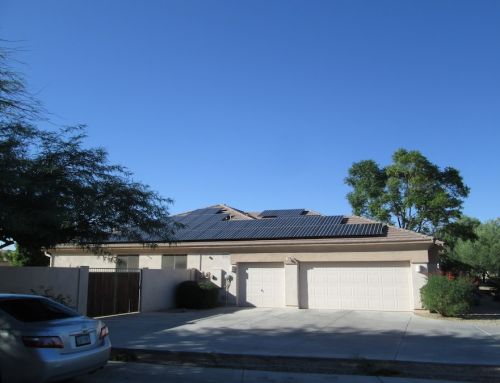The Economics of Installing Solar
The big question for any homeowner considering installing solar power is a simple one: How quickly will the system pay for itself?
The short answer: It depends on where you live.
That doesn’t just mean how sunny it is, though weather obviously matters. Just as important are subsidies, such as tax credits and rebates, which differ from state to state and between cities. Another big local factor: how much you currently pay for electricity—because it determines what you can expect to save each month once you start producing your own power.
We asked Clean Power Research, a research outfit in Seattle that has designed numerous online solar calculators, to run through scenarios in five U.S. cities to show how return on investment in a home solar-energy project can differ depending on location. We chose New York City, Denver, Los Angeles, Minneapolis and Portland, Ore.
Each scenario shared certain features as a common starting point to make the comparisons as fair as possible.
Each location was assumed to be using roughly the same size unit, placed on a south-facing roof, tilted at 30 degrees. Each hypothetical home was assumed to use 11,500 kilowatt-hours of electricity per year, the average in the U.S., according to the Energy Information Administration’s 2010 data. It was also assumed that the systems were being purchased with cash and that each homeowner’s system starts operating on Jan. 1.
While Clean Power Research cautioned that tax situations and effects of credits will differ from person to person, it assumed that the homeowner in each example was filing taxes as a single person and had annual income of $140,000.
But the similarities ended there. Each location featured different electricity rates, tax credits, rebates and weather. A five-kilowatt system in Los Angeles, for example, will generate about 700 kilowatt-hours of electricity per month. In Minneapolis, the same system will produce about 500 kilowatt-hours.
Adding it all up, the location with the best investment return was New York. The solar-energy system for our hypothetical home in Brooklyn paid for itself in just five years, thanks in part to large local incentives. Electricity rates in New York were higher, too, which yielded more savings over the long run.
What follows is a more detailed explanation of some of the chart’s features and some further analysis of the case study:
System size: All except Portland assumed a five-kilowatt system, the average size for a residential solar installation in most of the U.S. For Portland, which has a mild climate and an incentive system that favors smaller systems, we assumed a system of three kilowatts.
Federal tax credit: The federal government offers a 30% investment tax credit on the cost of the system after rebates. (The credit is higher in Denver, for example, because there is no state or utility rebate.) To claim the full credit, your tax bill must be bigger than the credit.
State tax credits: These credits reduce state taxes but increase federal taxes, because state tax credits are counted as gross income on federal returns.
Federal tax change: The tax credits issued by Oregon and New York cause federal taxes there to rise when making a solar purchase.
Rebates: Some states, and even cities and utilities, offer rebates that cover part of the purchase price of a solar-energy system installation. Government rebates, however, have declined recently in response to declining solar-panel prices.
Estimated first-year electricity cost before solar: These assumptions included base rates, fees and taxes, and factor in typical regional power loads, according to Heather Van Schoiack, spokeswoman at Clean Power Research. Our examples assume an increase in grid electricity prices of 1% every year.
Estimated first-year electricity cost with solar: This is roughly how much you would pay for local electricity after accounting for the value of electricity your system produces.
First-year net cost: This is the balance after adding up the purchase cost minus rebates and tax credits. In some locations, where incentives flow in over years, they are included in the following category.
Cumulative savings over 25 years: This is the cumulative net cash flow from the system. Each month the system generates power, the homeowner gets a cash credit on his or her utility bill, and those credits add up. In some cases, as in Brooklyn, there is also an incentive, such as tax abatement, that is counted as additional cash-flow over some number of years. The purchase cost is also subtracted, less rebates and first-year incentives. Solar-panel manufacturers have dropped prices in recent years, but fewer rebates means homeowners generally don’t pay less for the panels.
Payback period: This is a rough measure of the number of years it would take the system in each example to pay for itself. The system in Brooklyn would pay for itself in about five years. We say “about” because the electricity savings are rounded. The New York City tax abatement in the Brooklyn example is currently available for the first four years of a system’s life.
Ms. Chernova is a special writer in New York for Dow Jones VentureWire, a newsletter published by Dow Jones & Co. She can be reached at yuliya.chernova@dowjones.com.
A version of this article appeared September 16, 2012, on page R6 in the U.S. edition of The Wall Street Journal, with the headline: The Economics of Installing Solar.





